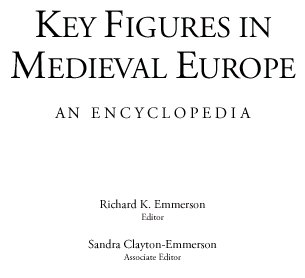|
|
|
|
|
.pdf 5,7 Mb
|
A
compilation that seeks to combine entries from several geographically-based
volumes into a single Europe-wide volume is bound to have
slight inconsistencies.
The entries are arranged alphabetically according to the spelling of the name in the source volume,but entries drawn from other volumes may refer to these individuals by somewhat different names or spellings.There is also some variation in length.Readers should not assume that the length of an entry represents the importance of a subject,because the source volumes vary in the size of their entries. Given the thousands of individuals included in the eight encyclopedias,it was necessary to establish some reasonably consistent criteria for selecting the entries included in Key Figures in Medieval Europe .Obviously, word length could not be the primary criterion.However,within individual encyclopedias length could be used as a rough gauge of importance,especially within certain categories,such as political fi gures.But such distinctions in length within a single volume could not be used as an absolute,because of the nature of historical knowledge and available evidence.We simply know much more about political fi gures (particularly members of the nobility)than we know about commoners,which means that entries on emperors, kings,and caliphs,for example,will,with a very few exceptions (e.g.,Dante),be longer than entries on musicians,painters,and poets.Similarly,because of the international nature of the Christian church and its omnipresence,we often know much more about religious fi gures than secular ones,even when they were attached to courts and cathedrals.As in the modern world,gender structures also affected the status of men and women during the Middle Ages,so that the historical record is generally much fuller when dealing with men than with women. Therefore,to provide some balance to Key Figures in Medieval Europe and to ensure that it represents the wide range of cultural practices,as well as political events and religious thought,the selection privileges secular and artistic fi gures by including several individuals whose entries in the source volumes are relatively short.Since these individuals often worked outside the corridors of power and left few biographical records,there is little biographical detail to explore,yet their accomplishments are signifi cant. The selection of entries,in other words,is ultimately driven by the editorial sense of long-term importance and infl uence,as well as by what the reader may find interesting about the Middle Ages. |
